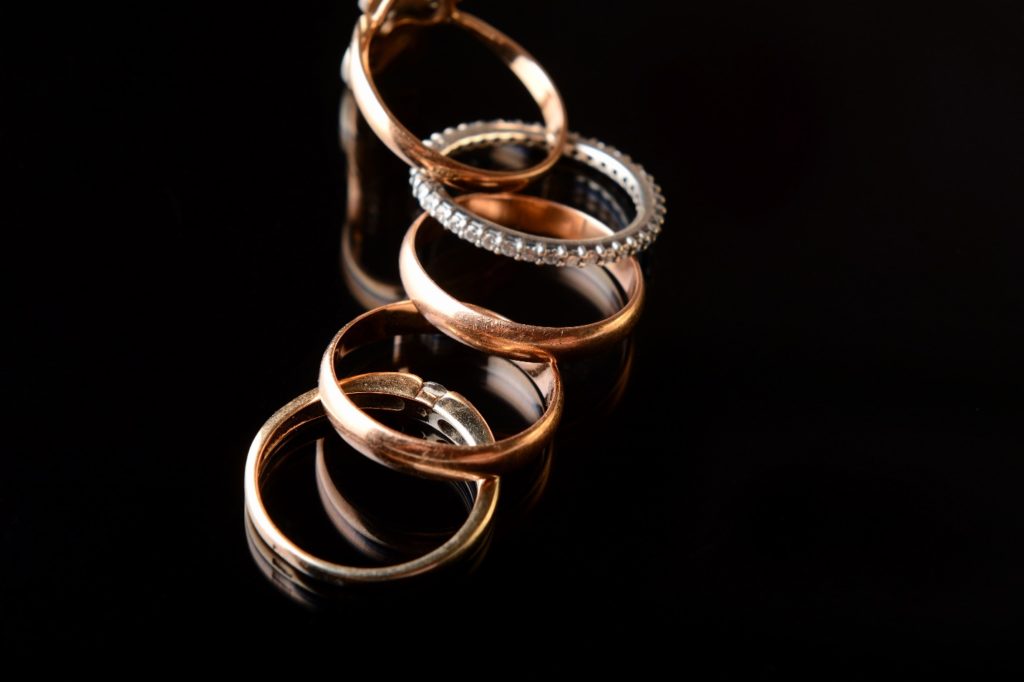Answering Your FAQs About Gold Jewelry
Welcome back to another entry on the Stewart Kuper Jewelers blog! This time we wanted to take a step back. We’ve talked a lot lately about traditions, and the types of jewelry and gifts folks can use to celebrate them. This time on the blog we wanted to go high level, look at gold jewelry as a whole and answer some of the most common questions we hear about them.
FAQs About Gold Jewelry

How Do You Know It’s Real Gold?
A surprisingly common question is how to tell if the gold jewelry you’re looking at is real gold! First, if you have any hesitation about buying jewelry from someone, look for the jeweler’s certifications so you can trust them! Then, look for the karat marks on the piece itself. Every piece should have a stamp somewhere on it marking its karat and the manufacturer’s trademark. If the gold is below 10 karats it can’t legally be marked/sold as gold in the U.S. (that may change depending on country). If you see something labeled 10K or less, it’s not ‘real’ gold.
What Does ‘Karat’ Mean?
Karat is the purity of the gold. The purest gold comes in at 24 karats (or 24K). While 24K is too soft to use in most jewelry, an alloy of gold and other precious metal makes for a stronger, better piece which also brings the purity of the gold lower. For instance, 18K means that the metal is 18 parts gold to 6 parts of whatever other metal the gold is alloyed with.
I’ve Seen KT, What is ‘CT’?
Speaking of other countries, some places outside of North America use the spelling ‘carat’ and thus abbreviate to CT. When it comes to gold there is no difference, even though CT itself isn’t accurate. Carat is actually a measurement of weight for gemstones.
What Is White Gold?
Pure gold, that 24K kind we mentioned, is yellow. The higher the purity, the more yellow it will look. White gold is an alloy of 75% gold with an addition of 25% nickel and zinc, the lower the gold level the whiter the material. This kind of gold is designed to imitate platinum and is often a lower-cost alternative to platinum.
What About Rose Gold?
Rose gold has been having a moment as of late. When Apple got their hands on it for their phones and watches, rose gold has become more popular than ever. Like white gold, rose gold is made from a mix of gold and other metals, in this case copper. The reddish hue of copper mixes with pure golds yellow to make for a subtle, gorgeous pink metal.
Why Am I Having A Reaction to My Ring?
Metal allergies are surprisingly common in many people so paying particular care to the metal make-up of their jewelry is crucial. Pure gold shouldn’t cause any reaction but since most gold is alloyed with other metals to increase its durability you could be having a reaction to that mixed in secondary metal. Many times it is nickel, a common metal allergen. After giving the affected area a break and time to return to normal, try wearing a different piece to see if it still affects you, or you can go to an allergy specialist to determine if you’re allergic to any metals.
These are just some of the many frequently asked questions we get about gold jewelry. Keep your eyes peeled on the site as we continue to address them. We want our customers to be in the most educated, comfortable place they can be when they do their jewelry shopping. If you have any questions or are ready to schedule an appointment with Stewart Kuper, contact us today and we can help guide you on your journey!
Call (520) 750-0050 and Book Your Appointment Today!


